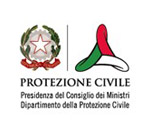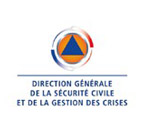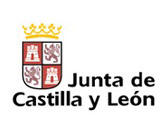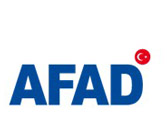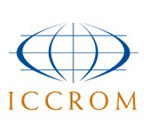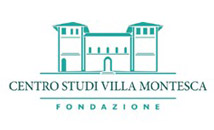Around 30 lecturers trained the first 40 professionals from the disaster risk management and cultural heritage sectors gathered to exchange practices, operational tools and lessons learnt in the field
The recently closed International Training Module on the Protection of Tangible and Intangible Cultural Heritage during Emergency, held in virtual mode on 8-9-17-22-23 and 26 November 2021, was a six-day pilot course addressing disaster risk management issues with a focus on cultural heritage safeguard. The course – whose programme was conceived by the PROCULTHER Consortium Partners – is an advanced training session for disaster risk management and cultural heritage experts dealing with the protection of both tangible and intangible cultural heritage during emergency. Due to the travel restrictions related to the COVID-19 health crisis, the event, coordinated by the Italian Civil Protection Department – DPC, as Consortium leader, was held in remote mode thanks to the technical and logistical support of the Fondazione Centro Studi Villa Montesca – VM.
Being PROCULTHER an initiative undertaken in the framework of the Union Civil Protection Mechanism – UCPM, the invitation has been limited to the Mechanism’s Members and Participating States; in fact, this pilot course aimed at reinforcing knowledge, skills, and procedures for the creation of UCPM-driven capacities dedicated to the protection of cultural heritage at European level, as well as at strengthening resilience capacities at national level. In particular, the course addressed issues that can increase the capacity of the UCPM to support, upon request, Countries overwhelmed by disasters affecting the cultural heritage protection sector. Therefore, with the aim to ensure interoperability between deployed modules to assist operations in a coordinated and effective manner, the course provided specialized knowledge on how to deal with cultural heritage protection in emergencies in line with the European standards.
More than 30 lecturers – some of them being the same experts from the project Consortium Partners involved in the elaboration of the “Key Elements of a European Methodology to Address the Protection of Cultural Heritage during Emergencies” – shared their specific expertise developed in this field. Experts from DG ECHO, ICCROM and UNESCO, contributed with their international perspective; in addition, the course gathered experts from Italy: the Civil Protection Department – DPC, the Ministry of Culture, the Ministry of Interior – National Fire and Rescue Service; from France: the Direction Générale de la Sécurité Civile et de la Gestion de Crises – DGSCGC, the Service départemental d’Incendie et de Secours de l’Oise – SDIS-60, the Service départemental-métropolitain d’incendie et de secours de Lyon et du Rhône – SDMIS-69, the Centre for Research and Restoration of the Museums – C2RMF, the General Directorate of Cultural Heritage – Ministry of Culture; from Spain: the General Directorate of Cultural Heritage – Emergency Unit for Cultural Heritage of the Region Castilla y León – UGRECYL, the General Directorate of Civil Protection and Emergencies – DGPCE; from Turkey: the Disaster and Emergency Management Authority – AFAD, the İstanbul Yıldız Technical University, and the Faculty of Fine Arts and Architecture at Hasan Kalyoncu University.
Almost 40 trainees were awarded with a “Certificate of Participation” for having successfully completed the training module. They represented 15 UCPM States and came from the following Ministries, disaster risk management and research institutions: the Ministry of Culture (Bulgaria); the Ministry of Interior – Civil Protection Directorate (Croatia); the DGSCGC, SDIS-60 and the Ministry of Culture (France); the Federal Agency for Technical Relief – THW and the Deutsches Archaeologisches Institut – DAI (Germany); the Ministry of Culture and Sports (Greece); the Army Directorate for the central coordination of the surveillance and prevention and protection service, the Carabinieri Command for the Protection of Cultural Heritage, the National Fire Brigade Corps and the Suor Orsola Benincasa University (Italy); the National Heritage Board (Latvia); the Corps Grand Ducal d’Incendie et de Secours, the Ministry of Culture and the Service des Sites et Monuments Nationaux (Luxembourg); the Museums and Galleries of Podgorica (Montenegro), the National Museum in Warsaw and the State Fire Service (Poland), the University of Porto – Faculty of Engineering (Portugal), the National Institute of Heritage and the General Inspectorate for Emergency Situations (Romania), the Administration for Civil Protection and Disaster Relief (Slovenia), the Institute for Cultural Heritage, the General Directorate of Fine Arts – Ministry of Culture and the General Directorate of Cultural Heritage of the Region Andalusia (Spain), AFAD and the General Directorate of Cultural Heritage and Museums – Ministry of Culture (Turkey).
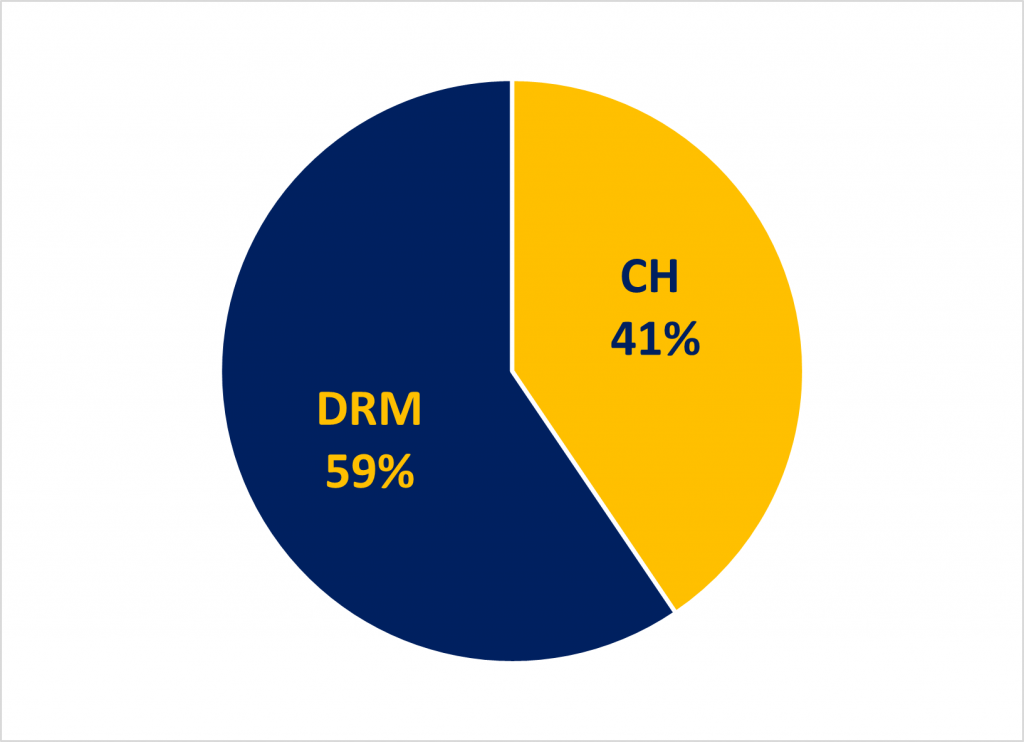
The graph 1 on the left shows the average sector of origin of participants considering the whole training period. Participation from both sectors was balanced, with a slight majority of disaster risk managers (59%), while an average of 45 participants per day, including trainers and trainees, followed the course (1). To overcome the disadvantages caused by the virtual mode in which the course was held, training organisers have made available a tool for file sharing developed by VM – the “Montesca Learning Platform” – and asked to the lecturers and trainers, as a preparatory activity, to share in advance their presentations and all the documents included in their session. According to the feedback received from the evaluation pools proposed to the trainees at the end of the activity, this modality for information sharing was very much appreciated by the participants since the totality of them confirmed the usefulness and user-friendly of this tool. The training programme proposed followed the structure of the “Key Elements of a European Methodology to Address the Protection of Cultural Heritage during Emergencies” – the document built on the lessons learnt and best practices adopted by the members of the PROCULTHER Consortium and providing for a set of elements to advance preparedness and response activities with the purpose of including cultural heritage safeguard in all disaster risk management processes.
The first day session, held on Monday 8 November, was opened by Giovanni De Siervo – PROCULTHER Director – who welcomed all participants and, after a brief overview on the project, illustrated the course objectives and expected results. Following this intriduction, the course got into the heart of the matter with the first lecture “Disaster Risk Management: focus on the protection of cultural heritage” delivered by Prof. Dr. Gül Ünal from the İstanbul Yıldız Technical University. She focused on the differences between natural and man-made disasters, provided examples on the type and frequency of disasters and illustrated the risk management cycle with a special focus on cultural heritage protection.
Then the session dealt with the institutional and legal frameworks related to civil protection with a focus on cultural heritage protection in case of disaster. It is worth mentioning that Ms Pizzio, from DG ECHO that is co-funding the project, provided an outlook of the emerging trends and opportunities in the UCPM and EU context regarding the cultural heritage safeguard with particular attention to the natural and man-made disaster risks that the European Union may face. The session carried on with Ms Tandon (ICCROM) who introduced the participants to the international frameworks, treaties, and laws for the protection of cultural heritage and described what are the main actors active in the field at national/international level. Then Lt. Col. Alfonso, expert firefighter from the French Ministry of Interior – DGSCGC, discussed the main features and structure of the Union Civil Protection Mechanism, including the rules and phases for its activation/request for assistance. The session was then concluded with Mr Vaccari, emergency management expert at DPC (Italy), who delivered a presentation entitled “International partners and actors”, and with the lecture on “International coordination” delivered by Ms Andújar, Head of Operations at the General Directorate for Civil Protection & Emergencies (Spain).
The session dedicated to “International Missions”, held on 9 November, was divided in two parts: the one focusing on the mission activation phases and the related practical issues faced by the experts engaged in the field, while the second part dealt with the types of mission that can be implemented. The first two speakers, Mr Escalante and Ms Grapeloux, from the DG ECHO Emergency Response Coordination Centre (ERCC), got right to the heart of the matter with the presentation “International deployment inside and outside Europe”. Then, Mr Fabi, Head of Emergency Support Unit at the DPC Emergency Management Office (Italy), gave a presentation on “Personal and Team Preparation” providing the participants with a clear picture of what is needed for preparing a mission, from the official documentation to the mandatory requirements for the experts traveling abroad. Then PART 1 of the session concluded with the lecture entitled “Safety and Security Aspects” by Cpt. Rigal (SDMIS-69), that shared the concrete example of the Haiti 2020 emergency with the purpose of clarifying rights and obligations related to the safety and security issues, which the experts must abide by when deployed in the field.
After a brief introduction to the types of mission by Mr De Siervo, PART 2 started with the lecture on “Assessment Methodologies” by Ms Tandon who explained the methodologies for situation analysis, site inspection, info and data collection, risks identification, damage recording and reporting with a focus on cultural heritage safeguard. Basic concepts and goals of “Post Disaster Needs Assessment” were highlighted by Ms Abraham, Associate Project Specialist at the “Emergency Preparedness and Response Unit” of the UNESCO Culture Sector, while Ms Vara Moral, Civil Protection Expert within the Training and Institutional Relations Unit at the General Directorate of Civil Protection and Emergencies (Spain), illustrated the “Peer Review and Advisory missions”.
The third training day, Wednesday 17 November, was on the topic “Operational Issues on the Field”. The introduction on “Logistics” was delivered by Mr Ciavela, Expert in emergency planning and management at DPC (Italy), who shared the lessons learnt and practices implemented during the Italian intervention during the earthquake emergency occurred in Nepal in 2015. Afterwards, the floor was given to Mr Volaj, ERCC Senior Duty Agent at DG ECHO, that clarified the terminology, the information management and dissemination processes and the distinction between reliability of sources and credibility of information. Then Ilaria Salvi, Press Officer at DPC (Italy), provided the trainees with some tips and key indications on how to behave adequately when “Dealing with Media”, during the emergency response operations. The session carried on with Ms Piacentini, architect at DPC (Italy), and member of the Cultural Heritage Group working on PROCULTHER, with her presentation “Contextualizing the protection of cultural heritage in emergency. The “Cultural Heritage Cell” explained how, during the earthquake occurred in central Italy on 2016-2017, the Italian National Civil Protection System included the cultural heritage protection in the disaster risk management process.
The session then turned over to more technical aspects with the lecture on “Database and informative systems on cultural heritage” delivered by Mr Cara, geologist at DPC (Italy), and member of the Cultural Heritage Group working on PROCULTHER, who illustrated the geospatial data and services with a focus on cultural heritage that are available at European level.
The last interventions illustrated three meaningful experiences related to the protection of cultural heritage in emergency shared by France, Spain and Turkey. Cdt. Feuillet, Head of service for heritage protection at the SDIS 60 in France, presented the best practices implemented during the management of a thunderstorm of extreme intensity occurred in June 2021 in Beauvais (France); Ms Escudero, Conservator of the General Directorate of Cultural Heritage and Coordinator of the Emergency Unit for Cultural Heritage of the Region Castilla y León (UGRECYL) shared the experience developed by UGRECYL after the numerous interventions following the frequent forest fires affecting the Region’s fragile cultural heritage; Mr Doğanay, Disaster and Emergency Management Expert at the Ministry of Interior – Disaster and Emergency Management Authority (AFAD) concluded this day of training with a detailed description of the measures undertaken for cultural heritage protection by the Disaster Response System in Turkey after the earthquake that hit Izmir in 2020.
The training module of 22 November consisted in two sessions on “Securing Cultural Heritage”. Dr. Gündoğdu, from the Turkish Ministry of Culture and Tourism and member of the National Working Group involved in PROCULTHER, introduced the topic “Construction typologies and structural behaviour of cultural buildings” that was then concluded by Dr. Arun, from the Faculty of Fine Arts and Architecture at Hasan Kalyoncu University (HKU). The floor then passed to Mr Bolognese, experienced engineer from the National Fire Brigade Corps (Italy), who described the techniques and examples of safety short-term countermeasures in cultural heritage buildings and the related safety aspects.
The day closed with a lecture and a laboratory led by Mr Mercuri, architect at DPC (Italy) and member of the Cultural Heritage Group working on PROCULTHER. The intervention entitled “Damage assessment forms for immovable cultural heritage” was the first official opportunity to share the damage assessment forms for both tangible and intangible cultural heritage proposed by PROCULTHER Consortium in the “Key Elements of a European Methodology to Address the Protection of Cultural Heritage during Emergencies” (2). During the presentation, Mr Mercuri provided a detailed explanation on how to complete the form properly, he then referred to the case study of the Church of S. Paolo ad Peltuinum in Prata D’Ansidonia damaged during the Abruzzo earthquake in 2009, and afterwards, he invited all trainees to download the damage assessment form of immovable cultural heritage made available through the Montesca Learning Platform and practice on its compilation following the indications received.
The training session of 23 November was opened with the joint intervention entitled “Securing Movable Cultural Heritage” by a delegation of French experts bringing together civil protection and cultural heritage expertise: Lt. Col. Jager from the DGSCGC, Lt. Col. Fuentes fire safety advisor seconded to the Ministry of Culture since 2020, Ms Marie Courselaud and Ms Judith Kagan, both conservators, respectively from the Centre for Research and Restoration of the Museums- C2RMF and from the Ministry of Culture’s General Directorate of Cultural heritage and Architecture. After a brief introduction to the context and a mention of the main reference documentation, among others the “Key Elements of a European Methodology to Address the Protection of Cultural Heritage during Emergencies” and the “Cultural heritage regional/site security plan”, the presentation got to the heart of the matter and explained the phases of the safety operations, the safe evacuation and first curative treatments on movable cultural assets (e.g. paintings, statues, tissues, books, archives, etc.).
After France, it was Italy‘s turn to share its best practices in this field, with the lecture on “Cultural Heritage Debris” delivered by Ms Corrado, Architect at the Italian Ministry of Culture, who introduced the regulatory framework of such operations, i.e., the Ministry’s Directive of 2016 providing the procedures for the removal and recovery of cultural heritage debris and shared the most meaningful examples of debris selection: the case of San Benedetto Church in Norcia (PG) hit by the earthquakes of 2016 and the Church of San Salvatore in Campi, Norcia. Afterwards, Dr. Mercalli, General Director for the Security of Cultural Heritage of the Italian Ministry of Culture, was the next speaker relating on “Temporary storages and warehouses for cultural heritage” who illustrated the process for the identification and organisation of temporary storage facilities for the protection of cultural heritage at risk of disaster in Italy. She introduced the key regulatory reference, i.e., the Ministry of Culture Directive of April 2015, that mentions the mandate and role of national/local actors and institutional stakeholders that cooperate in organising and operating temporary storage facilities before and during emergencies.
The last part of this training session was entirely dedicated to the presentation of the other damage assessment forms proposed for both tangible and intangible cultural heritage by PROCULTHER Consortium (2). Ms Escudero, explained how the compilation of these forms is important for supporting the work of conservators and restorers following the emergency, she provided a general illustration of the forms for assessing damage and then focused on those for movable cultural heritage.
Then, Ms Tandon with the lecture “Assessing intangible cultural heritage: The damage assessment form for intangible cultural heritage” explained the particular significance of intangible cultural heritage as well as the complexity of its clear definition. The training day was concluded with a laboratory led by Ms Escudero and Ms Piacentini, organised for the trainees to practice on the compilation of the damage assessment forms downloaded the day before through the Montesca Learning Platform following the indications received.
On 26 November, as part of the session “PART E – EXERCISE AND EVALUATION”, the training module concluded with a final exam whose questions were elaborated on the basis of a Discussion-based exercise (DBX) simulating an emergency affecting cultural heritage. Over a period of about three hours, training organisers alternated interactive “play” sessions and simulation spaces with multiple-choice evaluation sessions to test the effective comprehension of the concepts shared during the course, for a total of 34 questions addressing topics such as the EU request for assistance and mission preparation, data collection and info management, logistics, Host Nation Support, media, damage assessment as well as securing cultural heritage and temporary storages.
Finally, of the trainees (50% CH; 50% DRM) who took part in the final evaluation questionnaire proposed to record their impressions on the overall implementation of this Training Module on the Protection of Tangible and Intangible Cultural Heritage during Emergency, the final rating were 70% “excellent” and 30% “good” (3).
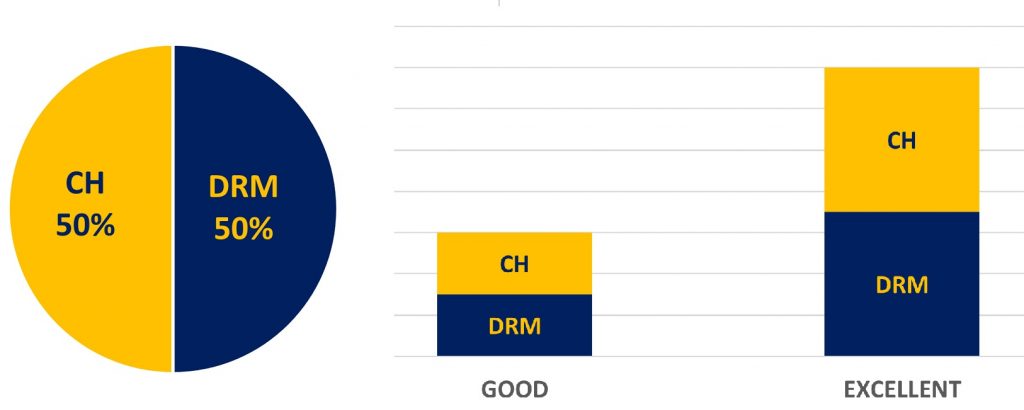
In addition to some worth mentioning positive comments and feedback collected among the participants answering to the question about the training sessions’ consistency with the objective of the course, from both the disaster risk managers (“All it was explained very well”; “The topics were spread with reasonable schedule. You covered every theme from different angles and that is really useful”) and the cultural heritage experts (“All the main issues related to the UCPM were covered extensively and comprehensively”; “The programme was well built and very consistent; “Very good and experienced trainers; good mix of theory and case studies”.), the questionnaire brough also some insightful suggestions for improving the course programme. When asked if they would have added other topics to the training programme, trainees reacted probably according to their sector of origin: while disaster risk managers asked, e.g., for more “technical” topics, like architecture or construction techniques, on the other hand, experts and professionals from the cultural heritage sector suggested more insights on the work with civil protection volunteers, on digital and geo-data instruments and more information on the pre-disaster phase for the protection of cultural heritage (3).
This pilot training module represented also an attempt for bringing closer two seemingly distant worlds that increasingly find themselves working together in the field and depending on each other when dealing with emergencies affecting cultural heritage; therefore, beyond the enriching experience for all participants, be they lecturers or trainees, we hope that this course has been a valuable opportunity for all participants to increase their understanding on the topics proposed and to enhance the networking among disaster risk managers and cultural heritage experts.
Further documentation:
(1) Source: CISCO WEBEX Meeting Reports, data elaborated by the PROCULTHER team project.
(2) 1. Baseline Data and Site Identification; 2. Building Profile; 3. Damage Assessment of Movable CH; 4. Damage Assessment of Immovable CH; 5. Securing Movable CH; 6. Transfer of Movable CH; 7. Damage Assessment of Intangible CH
(3) Source: CISCO WEBEX Pools Results, data elaborated by the PROCULTHER team project.

